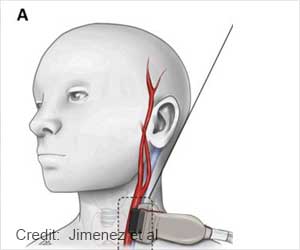Researchers report that a protein critical to development appears to have an impact on lungs exposed to smoking and air pollution.

"Calpain enables the bad behavior that occurs in pulmonary hypertension," said Su, corresponding author of the study published in the Journal of Clinical Investigation.
Pulmonary hypertension is an often progressive and deadly condition in which tiny blood vessels that permeate the lungs narrow, raising blood pressure and eventually enlarging the pumping chamber of the heart as it struggles to get blood inside the lungs.
Babies with heart defects can have it, but in adults it can result from chronic obstructive lung disease, or COPD, primarily caused by smoking (emphysema is the most common form of COPD) or air pollutants, including second-hand smoke. Inflamed and poorly oxygenated lungs start producing growth factors and other measures to constrict blood vessels in an effort to restore balance between blood flow and oxygen levels. This works in the short term, Su said, but a chronic stimulus such as smoking can make, ongoing constriction debilitating or deadly. Treatment improves symptoms such as shortness of breath, but the only cure is a heart-lung transplant.
Researchers found calpain gets activated by growth factors released by stressed lung tissue then multiplies the vascular remodeling by cleaving TGFbeta, another growth factor typically inactive in the lungs. Cleaving TGFbeta releases a strong, active form that increases cell proliferation and collagen production. A similar process helps heal a cut on the hand, but inside the blood vessel it's counterproductive, Su said.
Additionally, in animal models of pulmonary hypertension as well as lungs removed from patients getting a transplant, the researchers found elevated levels of calpain. When they blocked its action by giving an inhibitor or removing its gene, TGFbeta was not activated and vascular remodeling and scarring as well as the heart damage were prevented. "The pulmonary process was close to normal," Su said.
Advertisement
He noted that a calpain inhibitor is likely not feasible for children because of the protein's importance in development. He envisions an inhalable version of the inhibitor to minimize any side effects in adults.
Advertisement
Source-Eurekalert















